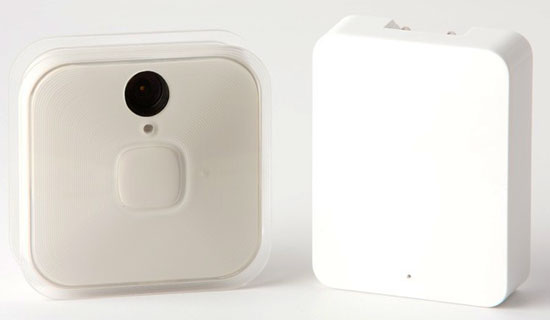One of the most troubling issues with home security and remote-monitoring products is the complexity and cost to set them up. Blink, a new Kickstarter project, is different. It promises to be astoundingly easy, and it’s inexpensive, too. Backers can get a simple remote motion detection and video camera unit for just US$69 — or two for $119.
Better yet, no yearly or monthly subscription service is required to use Blink. And the batteries last a year.
Amazingly sensible.
So far, nearly 4,700 project backers agree, having pledged $684,888. Blink blew past its $200,000 goal and has reached a stretch goal for a 105-decibel siren alarm add-on module.
How It Works
The small Blink module can be placed or mounted anywhere, and because it requires no external power source, you can move it around easily. To connect it to your home WiFi, you plug in a small Sync Module and use Blink’s smartphone app to configure the basic settings.
As you might expect, the Blink remote-monitoring system is expandable, letting you place the devices all over your home.
After you place a Blink unit, motion will trigger an instant-on five-second HD video recording. This recording can go to Blink’s secure servers in the cloud — or better yet, if you don’t like the idea of any personal video being stored anywhere not 100-percent in your own control, you can set your recordings to be stored to an attached USB stick.
With the Blink app, you can invoke a live-streaming mode to simply take a quick peek at your place to see what’s going on, too.
When Blink records, an audio beep lets you know it’s recording (you can turn this feature off), and a non-hackable LED light glows to let you know the camera is recording. For use when people are at home, this is a signal that Blink is active. If intruders are tooling around your place, presumably they could see the light, too — but discrete placement might mean they wouldn’t see it. Obviously, the add-on siren could be used to warn criminals away.
What if your WiFi should go down while you’re on vacation? You’d get an alert sent to your smartphone. You can use the app to set up automatic arming or disarming schedules, or use location-based rules to define when the system is active.
What about the volume of video storage? Blink’s server will provide each system storage for up to 7,200 total seconds of video, which is 1,440 five-second events. Once the storage limit is reached, the oldest clips will be deleted to make room for any new ones. Of course, the record-to-USB option records to the available USB-attached storage.
Cool Features
As if recording motion-triggered HD video weren’t enough, Blink also will sense the temperature in your home and send you alerts if you want them.

It uses an LED illuminator with low-light video capture capabilities to ensure that you can see what’s happening day or night.
Plus, there’s a built-in microphone so you can hear what’s happening.
Rewards and Risks
The Blink project will end its funding drive on Sept. 4. Current rewards still available include a single Blink unit for $69 or two Blink units for $119. These units likely will ship in May of 2015, but there are a handful of spots left in the Blink Beta Membership for $149, which will deliver two Blink beta units as early as March.
The Blink Home System brings you three Blink units for $169. Other packages offer higher numbers of units or get into reseller options.
As for risks, the Blink team currently is working on several fronts: setting up the secure server for storing customer video clips and hosting them for your viewing; developing a beta version of the Blink app for iOS and Android; and preparing to conduct in-home trials of the alpha designs.
Blink doesn’t offer details, but it shows off the Blink prototype cameras and modules, noting that the Blink team has “decades of experience successfully delivering complex video compression technology” to its partners. Alpha pledge testing is scheduled to begin in December, beta pledge testing in March, and final delivery is slated for May.






















































